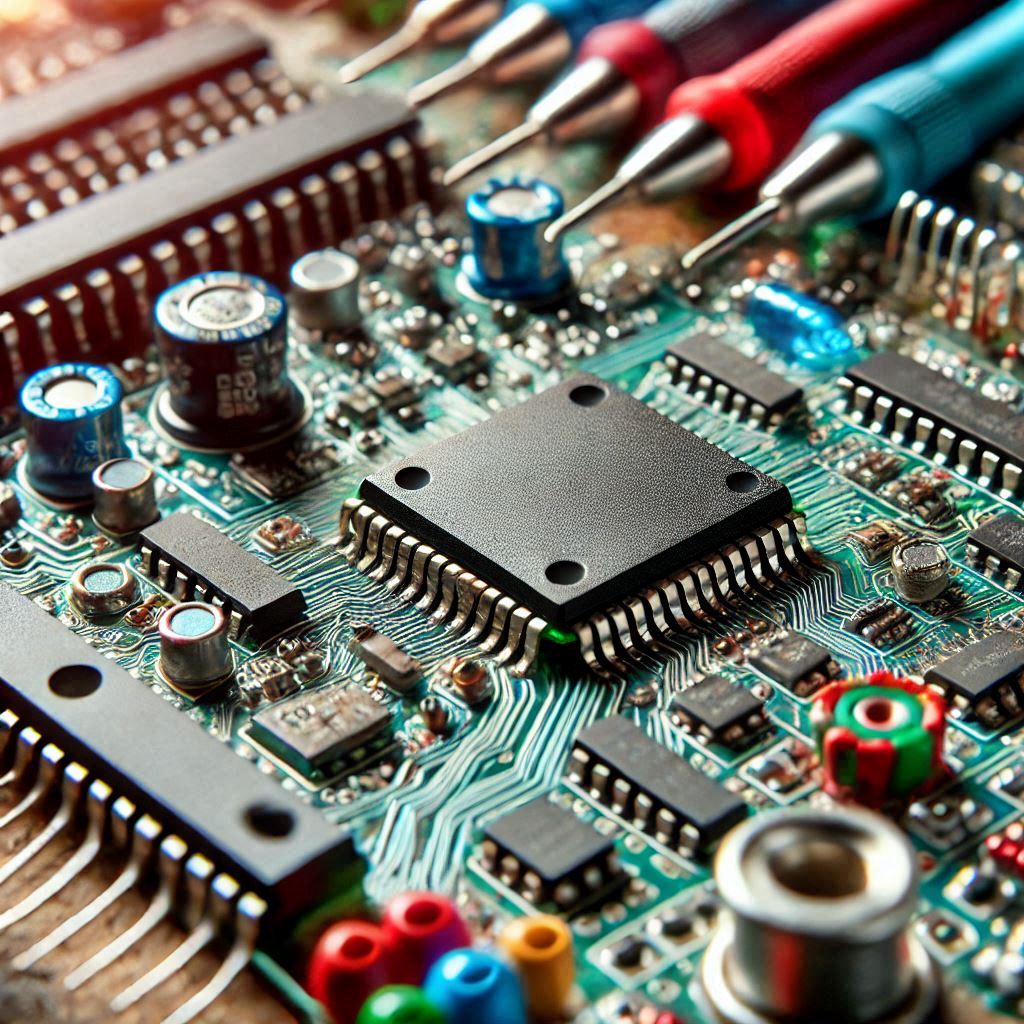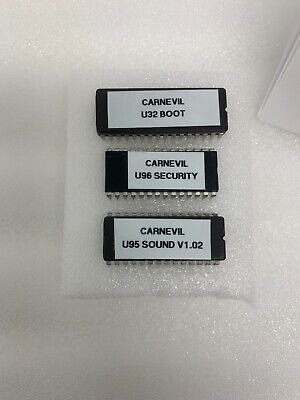Imagine a world where data storage was limited to fragile tapes and bulky hard drives. Thankfully, we have evolved beyond those days, thanks in part to innovations like EPROM. This remarkable technology has revolutionized the way we store, manage, and retrieve information. As we dive into the intricacies of EPROM, you’ll discover its essential features and groundbreaking advancements that keep it relevant even today. From its core functionalities to exciting applications in modern tech, understanding EPROM is not just for engineers—it’s crucial for anyone interested in how our digital universe operates. Buckle up as we unveil the fascinating world of EPROM!
What is EPROM?
EPROM stands for Erasable Programmable Read-Only Memory. It’s a type of non-volatile memory, which means it retains data even when the power is turned off.
What sets EPROM apart is its ability to be erased and reprogrammed. This process typically involves exposing the chip to ultraviolet light, allowing users to rewrite stored information as needed.
The architecture consists of floating-gate transistors that can hold an electric charge. This unique design helps preserve data integrity over time.
Commonly used in applications like firmware storage, EPROM has been integral in everything from early computers to embedded systems. Its reliability and flexibility make it a favorite among developers looking for robust solutions in various tech environments.
Core Features of EPROM Technology
EPROM, or Erasable Programmable Read-Only Memory, boasts several defining features that set it apart in the memory landscape. Its most notable characteristic is its ability to be erased and reprogrammed using ultraviolet (UV) light. This flexibility allows developers to update firmware without needing physical replacement.
Another core feature is non-volatility. EPROM retains data even when power is lost, ensuring information remains intact for extended periods.
The technology also supports a wide range of operating temperatures, making it suitable for various environments from consumer electronics to industrial applications.
Additionally, EPROM chips come with multiple storage capacities and can be integrated into different devices effortlessly. Their longevity further enhances their appeal; they have a lifespan measured in decades under normal usage conditions. These features collectively contribute to the enduring relevance of EPROM technology across numerous sectors.
Evolution of EPROM technology
EPROM technology has come a long way since its inception in the 1970s. Initially, EPROMs were bulky chips that required ultraviolet light to erase data. This cumbersome process limited their practicality in many applications.
As semiconductor technology advanced, manufacturers began developing more compact and efficient EPROMs. The introduction of windowless designs made them easier to use while increasing reliability and performance.
The shift towards programmable read-only memory (PROM) also marked a significant milestone. It eliminated the need for UV exposure by allowing electronic programming instead. This development paved the way for faster and more versatile memory solutions.
With each iteration, engineers focused on enhancing storage capacity and speed. These improvements have enabled EPROMs to remain relevant even as newer technologies emerged, showcasing their adaptability in an ever-evolving tech landscape.
Benefits and applications of EPROM
EPROM, or Erasable Programmable Read-Only Memory, offers a range of benefits that make it invaluable in various applications. One of its primary advantages is reusability. Users can erase and reprogram EPROMs multiple times without losing data integrity.
This flexibility is particularly useful in development environments where software testing and iterations are common. Engineers can quickly modify firmware to enhance performance or fix bugs.
Furthermore, EPROM retains information even when power is off. This non-volatility ensures crucial data remains intact for future retrieval and operation.
In terms of applications, EPROM finds use in embedded systems and consumer electronics, such as washing machines or microwave ovens. It’s also prominent in automotive technology for storing control unit software.
With advancements in the field, EPROM continues to play a significant role across industries by fostering innovation while maintaining reliability.
Applications in Modern Technology
EPROM has carved a significant niche in modern technology. Its ability to retain data without power makes it ideal for various applications.
In the realm of embedded systems, EPROM is crucial for storing firmware. Devices like microwave ovens and washing machines rely on this memory type to function smoothly.
Telecommunications also benefits from EPROM’s reliability. It stores essential parameters that help maintain network integrity and performance.
Moreover, automotive technology leverages EPROM for engine control units (ECUs). This enables real-time adjustments based on changing conditions, enhancing vehicle efficiency.
Another emerging application lies within smart devices and IoT gadgets. As these technologies evolve, the demand for stable memory solutions like EPROM continues to grow.
Its versatility ensures that even as we advance into more complex tech landscapes, it will remain an indispensable component in many innovations.
Top innovations in EPROM technology
Recent advancements in EPROM technology have led to significant innovations that enhance its functionality and performance. One standout innovation is the integration of advanced programming techniques, which allows for faster write speeds and reduced power consumption. This efficiency makes EPROM more appealing for various applications.
Another noteworthy development is the miniaturization of these chips. Smaller form factors enable their use in compact electronic devices, expanding possibilities across industries like consumer electronics and automotive systems.
Furthermore, emerging hybrid technologies combine EPROM with flash memory characteristics. This fusion optimizes data retention while maintaining quick access times, catering to modern demands for speed and reliability.
Developments in error correction algorithms are enhancing data integrity within EPROMs. These algorithms help mitigate potential issues during read/write processes, ensuring consistent performance even under challenging conditions.
Future possibilities for EPROM
The future of EPROM technology holds exciting potential. As industries evolve, the demand for faster and more reliable memory solutions will rise.
Innovations in nanoscale engineering could significantly enhance the storage capacity of EPROMs. With advancements in materials science, we may see more efficient architectures that improve performance while reducing energy consumption.
Integration with emerging technologies like artificial intelligence and machine learning is another intriguing possibility. Smart devices could leverage enhanced EPROMs for quicker data processing and real-time analytics.
Moreover, as IoT devices proliferate, there’s a growing need for robust memory systems that can withstand extreme conditions. Future iterations might be designed to meet these challenges head-on, ensuring durability without sacrificing speed or efficiency.
The intersection of quantum computing with traditional memory types presents another frontier. Researchers are exploring how hybrid models could revolutionize data storage, potentially leading to breakthroughs previously thought unattainable.
Comparison with other types of memory
When looking at memory technology, it’s essential to understand how EPROM stacks up against other types. Each memory type serves a unique purpose and has distinct characteristics.
EPROM (Erasable Programmable Read-Only Memory) is non-volatile, meaning it retains data even when power is off. This feature makes it similar to EEPROM (Electrically Erasable Programmable Read-Only Memory), which also offers reusability but allows for electrical erasure rather than exposure to UV light like EPROM does.
Then there’s Flash memory, which has become the go-to storage medium in many applications today. Unlike EPROM, Flash can be rewritten much more quickly and doesn’t require special equipment for erasing data. However, it can wear out faster than EPROM due to limited write/erase cycles.
Static RAM (SRAM) provides faster access times compared to both EPROM and Flash but is volatile; it loses its content without power. While SRAM excels in speed for cache memories in processors, its higher cost per byte limits its use as long-term storage.
Comparing these technologies reveals that each has its place depending on the requirements of speed, capacity, volatility status, and cost efficiency. Understanding these differences helps engineers choose the right type of memory for their specific needs while leveraging the unique advantages offered by solutions such as EPROM technology.



